The Ultimate East vs West Battle // A Cuisine Comparison (for 2022)
Welcome To The Ultimate East vs West Cuisine Debate // 🍜 vs 🍔
It’s time to pit East vs West in this ultimate cuisine comparison. Who will come out on top?!
Discussing new food is always an exhilarating topic and you might commonly find yourself struggling to explain or describe a dish, resigning yourself to a “you had to be there” moment.
For anyone who has been racking their brains on how to break down a Chinese pear or a 煎饼 to their family, or even how to describe a Chinese menu to a newcomer, the stress is over.
Our Eastern diet vs Western diet comparison doesn’t only find alternatives but breaks down the pro’s and con’s of both too!
Eastern Diet vs Western Diet – An Introduction
Eastern Diet vs Western Diet – Who Wins?
Eastern Diet vs Western Diet – FAQ’s
Alternatively, if you’re just wondering about traditional Chinese food in general, check out our video below.
East vs West – An Introduction
Talking about new foods can be hard when you’re trying to discuss a dish that isn’t local to the rest of the people in the conversation.
How do you explain that the hotpot you spent 5 hours eating with colleagues wasn’t cooked before it was delivered to the table?
Or that your dish is shaped like an ear as a result of legend?
That’s why we compiled a comprehensive list of our favourite East vs West dishes to help you decide which one you prefer and break down the history of these well-loved dishes.
Additionally, if your main concern is actually how to talk about food in Chinese, we have a video for that, right here!
East vs West – Who Wins?
The following list of comparisons are a subjective selection of Western alternatives to Chinese snacks compiled by the LTL marketing team.
The list can be used as a replacement solution for people who might be missing their favourite Chinese snacks, or China newbies who want some insights into the different foods they can expect during their travels (and should look out for)!
East vs West | Round 1 – Pomelo vs Grapefruit
East vs West | Round 2 – Noodles vs Spaghetti
East vs West | Round 3 – Mala Tang vs Stew
East vs West | Round 4 – Dumplings vs Ravioli
East vs West | Round 5 – Bao vs Bread
East vs West | Round 6 – Hotpot vs Hotpot
East vs West | Round 7 – Youtiao vs Doughnuts
East vs West | Round 8 – Chicken vs Chicken
East vs West | Round 9 – Pear vs Pear
East vs West | Round 10 – Congee vs Oatmeal
East vs West | Round 11 – Jianbing vs Galette
East vs West | Round 12 – Tea Egg vs Boiled Egg
East vs West | Round 13 – Xianbing vs Quesadilla
East vs West – WHO WINS?
1. East vs West: Pomelo vs Grapefruit 🍊
Fruit thrives internationally but without a doubt, some reign supreme.
Pomelo and grapefruit are both citrus fruits from the same family.
The pomelo came first, originally from Southeast Asia and was followed by the birth of the pomelo-orange hybrid – the grapefruit.
Birthed in the West Indies, it later became popular in the USA and spread throughout the West.

Both are delicious – although best avoided on certain medications – but have slight differences outlined below.
Pomelo in the East
Pomelo’s are sweet, full of fibre and nutrition and shaped like a tear drop.
They can grow as large as a cantaloupe, weigh as much as 10kg and are usually encased in green or yellow thick skin. The fruit inside can be either pink or white.
In Chinese culture, they’re considered as a symbol of prosperity and luck.
They’re a commonly gifted fruit during Chinese New Year as eating them helps creative a positive aura for the incoming year.
You can find these sweet treats both untouched and pre-peeled (complete with plastic forks) on any corner and in any fruit shop around China for no more than 20RMB.
Don’t forget to check out our video about fruits in Chinese to learn about a few more Chinese specialties.
Grapefruit in the West
Grapefruit’s are much more bitter, circular, smaller and various shades of pink and yellow.
They’re also 92% water and way more common in the West.
The pomelo-orange hybrid came about by accident but it’s become a staple in supermarkets in the UK and US (for a higher price than pomelo) and is often mixed into various other items such as IPA, muffins and dehydrated and presented in cocktails.
It’s believed origins are in Barbados, where the fruit spread and grew in popularity around the West Indies before making it’s way abroad.
There is currently a list of 53 medications that can not be taken alongside eating grapefruits so only consume it if you’re certain you don’t fall under this list.
Further, eating too much can cause bad side effects including (but in rare occasions) heart attacks and death. Be responsible with consumption.
On the other side however, the tangy fruit is filled to the brim with antioxidants, vitamin C, and folic acid and reported to help with sexual reproduction amongst men.
You’ll have to be the judge.
2. East vs West: Da Lu Mian vs Spaghetti Bolognese 🍝
This is a big one. Noodles in the west, or noodles in the east? I’m sure all Italians are on the edge of their seats reading this!
Whether it’s noodles or spaghetti, it’s a staple in our diet!
These two delightful dishes are probably the most interchangeable options on our Eastern Diet vs Western Diet list due to the wild similarities between them!

Da Lu Mian in the East
Da Lu Mian (打卤面) is a northern Chinese dish dating back many years but fairly unpopular outside of the region despite being a quickly-fixed, tasty and filling option.
The ingredients can vary massively, however the dish is distinguishable by its simple design: noodles covered by a flavour filled gravy or sauce.

Dry ingredients are often dehydrated too such as wood ear mushrooms (木耳 mù’ěr) and dried lily flowers (黄花 huánghuā) and included into the dish.
It is often adapted to meet buddhist tastebuds and vegetarian or vegan requirements.
Most commonly, the sauce will have a tomato base and include lots of vegetables, but variations include pork or shrimp and sometimes even eggs.
Traditional egg and tomato on noodles could even come under this term and some will be filled with a soupy sauce.
This inexpensive delight is definitely worth a try.
Spaghetti Bolognese in the West
This popular western dish has disputed origins and unlike 打卤面, is popular throughout western Europe.
Sources dispute whether it is in fact Italian, French or was brought to life elsewhere.
DID YOU KNOW – Spaghetti Bolognese actually doesn’t exist in Italy. It’s an international name given to the dish. For the record, it’s known as Tagliatelle al Ragù in Italy.
There are genuine disputes that the dish isn’t actually from Bologna, in Italy, but is often linked because of the name. The sauce is actually a ragú as mentioned – a meat based sauce, which varies with recipes.
The general makeup, much like 打卤面, includes a tomato-based sauce including meat, onions and red wine on top of spaghetti. It’s also a quick dish to throw together and extremely filling.
At one point, this traditional dish was ranking 2nd and 3rd respectively in the UK and Germany for its popularity.
We are sure this one will cause some debate so why not vote for your favourite below!
3. East vs West: Mala Tang vs Stew 🍲
Soupy dishes are filmed to the brim with hearty ingredients and flavour-filled broths are seen in eastern diets and western diets all over the world.
Popular for their warming qualities and simple recipes, it’s only natural that this staple would make our East vs West list.

Mala tang in the East
This delightful northern spicy soup translates literally for our ease
- má (麻 numbing)
- là (辣 spicy)
- tàng (烫 soup)
The broth is filled with chillis and unsurprisingly originated from the spicy Sichuan province.
The history of the soup is linked to health. Sailors and fishermen avoided falling ill whilst working by the sea in damp, cold conditions by cooking the spicy Sichuan pepper together with ginger, herbs and broth to remove their inner dampness.
By following the TCM rules of yin and yang, malatang was born.
The dish is not often translated and instead malatang is an accepted name in English for the dish, due to its similarity in name and design to hotpot.
Typically, malatang’s are inexpensive dishes that allow the consumer to decide how many ingredients to include and what ingredients, including the broth.
Shops sell them all over China and some offer skewers vs loose ingredients, charging by the skewer instead of by weight.
Common ingredients chosen are: tripe, quail eggs, spam, lotus root, dumplings, noodles, mushrooms, fish balls and various organs including intestines, liver and lungs.
The dish is more of a street food for lone consumers than a dish for communal dining and for its medicinal qualities and good taste, it can’t be missed.
Stew in the West
Stew is an age old, winter classic throughout the world that keeps up warm and our bellies filled.
Stew is extremely similar to malatang for its properties of adding ingredients into a broth, without processing or purifying.
Whilst malatang adds broth to mainly cooked ingredients, stew cooks everything together in one pot and has a stronger, earthier taste.
The soup is also typically thickened with flour and filled with cuts of meat which become juicy and tender from extended time cooking. Vegetables also build up the serving sizes.
Some of the earliest recordings of stew in the west come from the 14th century in France, and the style has remained fairly consistent.
The name in English actually comes from the original French name estuve.
Some stews are so thick, they can simply be served on plates with an additional gravy or sauce element to add on top.
It’s not possible to say which is best, but in this case, if you’re not a fan of spice, stew might be a winner.
4. East vs West: Dumplings vs Ravioli 🥟
Another battle royale here! Two big guns from different parts of the world. Who stands tallest?!
It’s fair to say that as humans, we enjoy stuffing tasty, flavoured ingredients in edible wrappers and boiling them.
For some of these delights, we even further dip them into or slather them in sauces.
Our East vs West cuisine debate really highlights just how creative recipes have become.
This pairing is no different so read on below to see the differences or if your stomach started rumbling, check out our post on Shanghai’s world famous snack.

Dumplings in the East
Much like many other long-standing Chinese dishes, dumplings are attributed to legend and tradition and are recorded as early as the Han dynasty!
It is believed that a local medical practitioner returned to the countryside to his family home where he found many of his neighbours struggling with frostbite, especially by their ears. He decided to cook mutton, chili and herbs together and wrap them in dough, folding them into the shape of ears. After boiling, they were handed out to neighbours to help their ailments. The result is unknown, but the dish remains.
In Chinese, these can either be called 饺子(jiǎozi) or 水饺 (shuǐjiǎo).
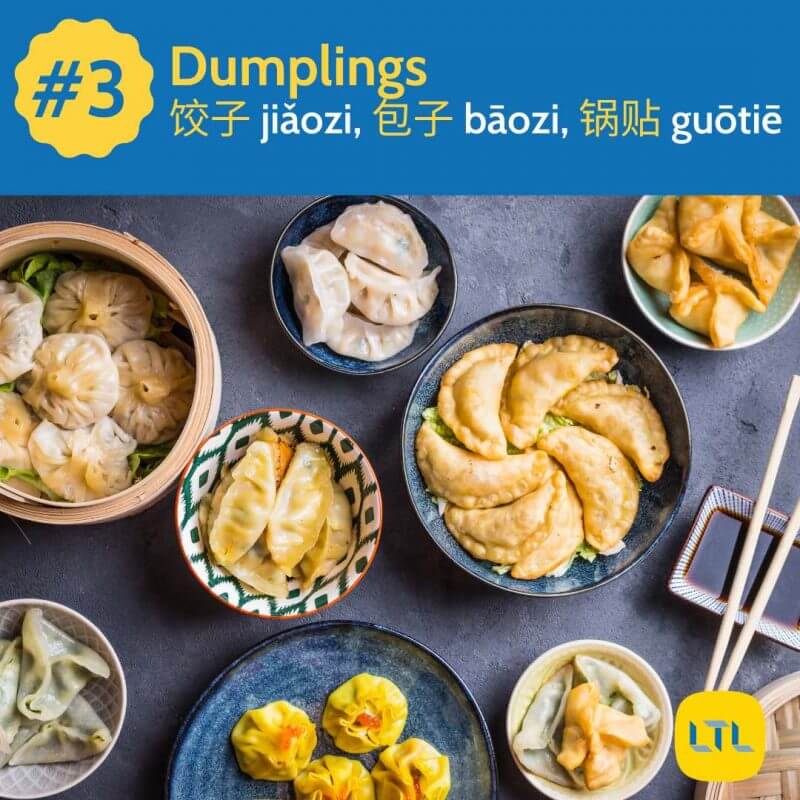
DID YOU KNOW – The original name was “jiao’er”, meaning tender ears, linked to the legend of their creation.
They’re considered an appropriate dish to serve guests because they are believed to bring prosperity and have even been found in the tomb of influential figures from the past.
The dish can be steamed, boiled or pan fried and the fillings can have special meanings during the Chinese New Year. These include:
- 🐂 Beef = financial success
- 🐟 Fish = incoming wealth
- 🥬 Cabbage = good luck and wealth
- 🌿 Celery = potential for money
- 🍄 Mushroom = fortune and wealth
- 💰 A coin = prosperity (this is very uncommon today)
Dumplings can actually be super healthy when boiled depending on filling and portion sizes, so don’t rule them out for being unhealthy. If its MSG you’re worried about, check our post debunking those myths.
Ravioli in the West
Although a similar boiled dumpling equivalent does exist – the Polish pierogi – we selected ravioli for its international prominence.
Ravioli was created in Italy and was already common in other countries in the West of Europe by the 14th century including the UK, France, Cyprus and Turkey.
Variations also exist for certain religious groups internationally.
The dish was initially made by hand however, in order to hold a longer shelf-life, ravioli in a can was created and continues to thrive. Canned versions are typically cheese, beef, chicken or sausage marinated in a tomato sauce.
Much like dumpling fillings can vary and handmade ravioli can be filled with:
- 🥚 Eggs
- 🧀 Cheese
- 🦀 Seafood
- 🌿 Herbs
- 🥩 Meat
- 🥦 Vegetables
The key difference is that dumplings will typically come with a side dish of dipping sauces, whilst ravioli will be soaked in the thicker, creamier sauce.
Which do you prefer? Tell us in the comments below!
5. East vs West: Bao vs Bread 🍞
The ultimate breakfast snack, bread has been a staple for diets all over the world since the beginning of time.
Despite developments to cooking methods and recipes that naturally adapt over time, bread in the East and the West have remained completely unrelated.
So here’s a brief, but sufficient breakdown of the two.

Baozi in the East
Chinese baozi 包子 is a yeast-leavened, fluffy, light bread that is typically steamed or fried, popular throughout Asia with a wide variety of fillings and cooking methods.
The dish was believed to have been made by military leaders to feed soldiers a long time ago and is recorded as early as the song dynasty.
Baozi can be eaten at any time of the day but is most common in China as a breakfast dish (see our video below for a class Shanghai style breakfast).
You can always find them being sold on street corners for 3-5RMB, toasty and ready to eat with a wide variety of delicious fillings.
Initially, mantou was used to describe both filled and unfilled buns, however today, bao or baozi are only considered the bread options with fillings and mantou are plain buns.
Fillings can include
- Red bean
- Vegetables
- Meat
- A tasty soupy filling (skill is needed to consume the soupy bao – also known as 小笼包 (xiǎo lóng bāo)
August 22nd is National Baozi Day too… so remember to get yourself a bag or two of these savoury snacks!
Bread in the West
In the West, savoury bread has been a staple ingredient in the diet for centuries, first credited to the Egyptians in around 8000BC.
The closest modern day equivalent to the first bread made is the chapati or the tortilla, due to its flat consistency.
Old school bread was created by milling various different grains into a flour and baking this into ‘bread’.
Different variations of the modern day breads we see today from the loaf to the baguette have varying origins, but France is credited with creating a large sum of these.
Do you like bread or baozi? Tell us below!
6. East vs West: Hotpot vs Hotpot 🥘
Same name, different game.
East vs West – Hotpot style!
Both love hotpot, but what are the key differences and which one is better or holds more importance?
Decide for yourself from our brief descriptions below.

Hotpot in China
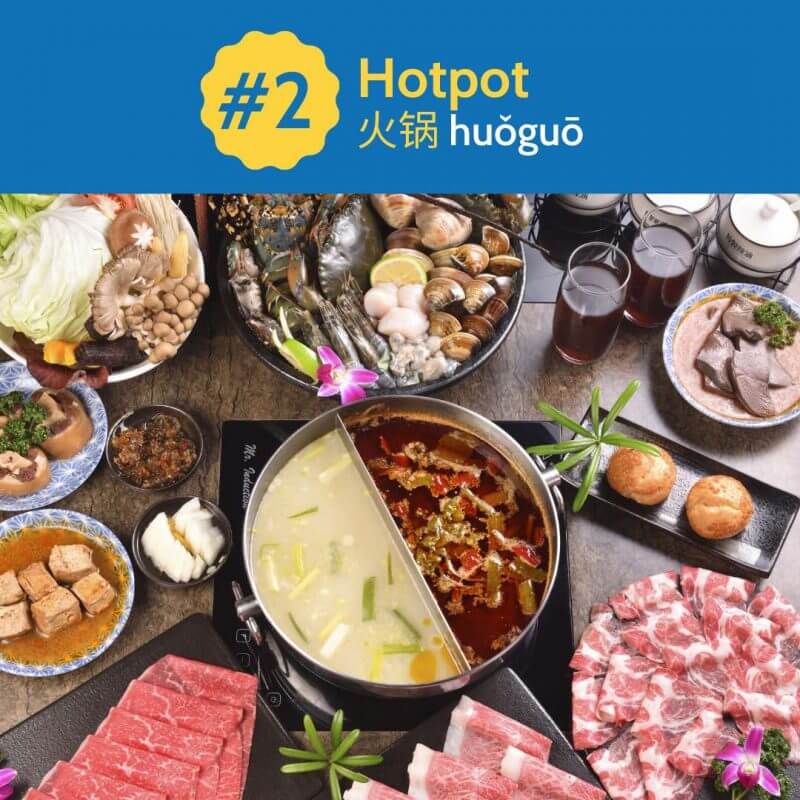
火锅 (huǒguō) or hotpot is a flavour-filled, soupy dish with the capacity to be filled with surplus additional ingredients.
The dish is popular ALL over China and regional variations exist such as the super spicy Sichuan hotpot.
There are also genre specific restaurants such as seafood or ‘cow only’ – which would offer various parts edible parts of the cow, such as tongue, fat etc.
Haidilao is one of the most hotpot restaurants in China and is a must visit.
Often a large pot filled is placed in the middle of a table and can feature multiple partitions, allowing it to be filled with multiple different flavoured broths at the same time. A popular style is one half spicy, one half vegetable, however some restaurants will allow multiple different broths to brew at the same time. Some times the pot is even split into four!
The main premise is that diners are offered boiling broths and raw ingredients with the ability to cook to their own preferences and the dish can be consumed over an extended period of time.
Hotpot’s are great for social occasions and one pot can feed a large group, as servers will regularly come round and fill the pot back up. Ingredients can also be continually ordered and there is no time limit.
Hotpot in the West
Hotpot in the West is a pub classic and it’s typically a cooked dish that comes ready to eat.
The most recognised version is the traditional English hotpot from Lancashire, dating back to 1859 and first considered a poor mans pie.
The roots of the dish lie in the industrial towns of the north-west of the UK. In the past, the ingredients were thrown together in the morning in a heavy clay pot before the workers headed out for the day. The dish would bake, unattended, throughout the day in the oven at a low temperature so that it would be ready to eat and piping hot when the workers returned home.
The main variations of the dish typically include carrots, parsnips, onions etc layered in-between a meat and topped with baked and slightly crispy potatoes.
The usual meats included are beef or lamb. Then a soupy broth or stock is poured over and left to soak in.
Despite origins as a poorer dish, sometimes the dish was traditionally filled up with oysters too, however this is much less common today.
So at the most basic element, Chinese hotpot is a raw dish waiting to be cooked and Western hotpot is a cooked dish best consumed instantly.
Much as malatang very similar to Chinese hotpot, stew is more similar than different to Western hotpot. You might have even had it accidentally served under the name of stew in the local pub as some websites report it’s actually a synonym.

Chinese Hot Pot – Catherine’s Experience
Chinese Hot Pot Experience – Angelina organised a group of students and staff to go out together to a near-by restaurant famous for Hot Pot dinner
7. East vs West: Youtiao vs Doughnuts 🍩
Sweet or savoury, these fried, doughy goodies are popular all over the world.
But how do they differ?

Youtiao in the East
The beloved youtiao (油条) might be the most versatile savoury treat of churro consistency you’ve ever experienced.
Suitable to mix in with your jianbing (see #11), your hotpot (see #6) and your congee (see #10) or to snack on solo, never has an ingredient been more useful.
Much like baozi, it’s most commonly eaten in the morning alongside other breakfast dishes, however it can be purchased ready to eat at any time of the day.
Typically, it is purchase along with soy milk and many people will dip the youtiao into the milk. Delicious.
This tasty snack isn’t found only in China, but is actually common in both East and Southeast Asian cuisine, so if you haven’t tasted it before, you’ve probably seen or heard of it.
In the most simple description, Youtiao is a fried stick of dough. It’s light, fluffy and a little bit crunchy. On the occasion, it even flakes. The stick itself doesn’t have much taste but it adds a new texture to other dishes and makes sure you don’t go hungry.
It’s also great for absorbing liquids and soaking up flavour.
Doughnuts in the West
We could have said churro, but it was too predictable so we’ve branched out and chosen the doughnut instead.
Both are, after-all, variations of leavened, fried sweet dough.
The donuts we see today date back to a product similar to the churro but named – the ‘oily cake’ eaten by Dutch travellers who brought it with them to the US.
As legend continues, in the 19th century, a ship captain’s mother made deep-fried dough combining nutmeg, cinnamon and lemon rind. The reason is unknown but believed to enable his crew to store a pastry on long voyages that might help fight scurvy and illnesses. She placed nuts in the centre, where the dough might not cook through, earning them their literal name – ‘doughnut’.
However it’s assumed that the idea of the ‘donut’ has existed for much longer, as many archaeologists have discovered – and continue to discover – fossils that look like they may have once been the same snack, in Native American grounds.
The two most common types today are both round shapes, but either filled or ring shaped and typically iced.
1920 is the earliest date credited to what we see now, where donut machines were created by a Russian refugee in the USA and upon its success, slowly produced in mass and spread around the USA.
Today, we tend to consume donuts with coffee or a bitter, hot drink on a social occasion and not as a nutrition filled illness-fighter.
Tell us which is your doughnut preference below.

Living in China as a Vegetarian or Vegan // Is It Possible?
Vegan or Vegetarian in China? Can a Vegan or Vegetarian survive in China? Here’s our top dishes for Vegans and Veggies and some great tips to help you.
8. East vs West: Beggars Chicken vs Roast Chicken 🍗
Chicken is a popular ingredient in both the East and the West and could be considered a culinary success throughout the centuries despite the animal initially being domesticated for fighting, not as food.
All over the world, variations of chicken-centred dishes feature rich histories and cultural origins, but read on for two of the most notable – and comparable – dishes.

Beggars Chicken
Beggars Chicken (叫化雞 – jiào huā jī) is a traditional dish that originated from folklore and is believed to have begun in Hangzhou as early as the 1600’s, although many cities claim it as their own.
There are many variations of the legend but our favourite tells how a homeless man stole a chicken one day. He wrapped it in leaves and cooked it over a fire, then hiding it it to avoid anyone noticing. When the coast was clear, he dug up it up and the clay cracked to reveal a moist, well-flavoured dish.
He went on to sell the recipe and became a rich man, whilst the dish remains today as a highly regarded specialty.
Today, preparation of the the dish follows a similar method, where bamboo or banana leaves wrap the chicken and then non-toxic clay or dough holds everything in.
Roast Chicken
Roasted chicken also has contested origins.
Believed to have first appeared in French medieval times, many also believe it originated in Germany. Some sources even cite other Western European countries and even the United Kingdom lays claim to the Sunday roast.
Either cooked by roast or rotisserie, the outcome is the same – a juicy, crispy chicken cooked in its own fat and the centre of a table filled with potatoes and vegetables.
The key difference is that roast chicken isn’t traditionally wrapped up to hold in the juices and runs a much higher risk of being dry or bland but both are time consuming and hold cultural value. Neither are considered every-day meals.
DID YOU KNOW – we even wrote a blog all about Chicken’s in Chinese! Chicken not only plays host to some great dishes as we’ve discovered, but also covers a number of insults in Chinese, crazy indeed! We really do cover everything!
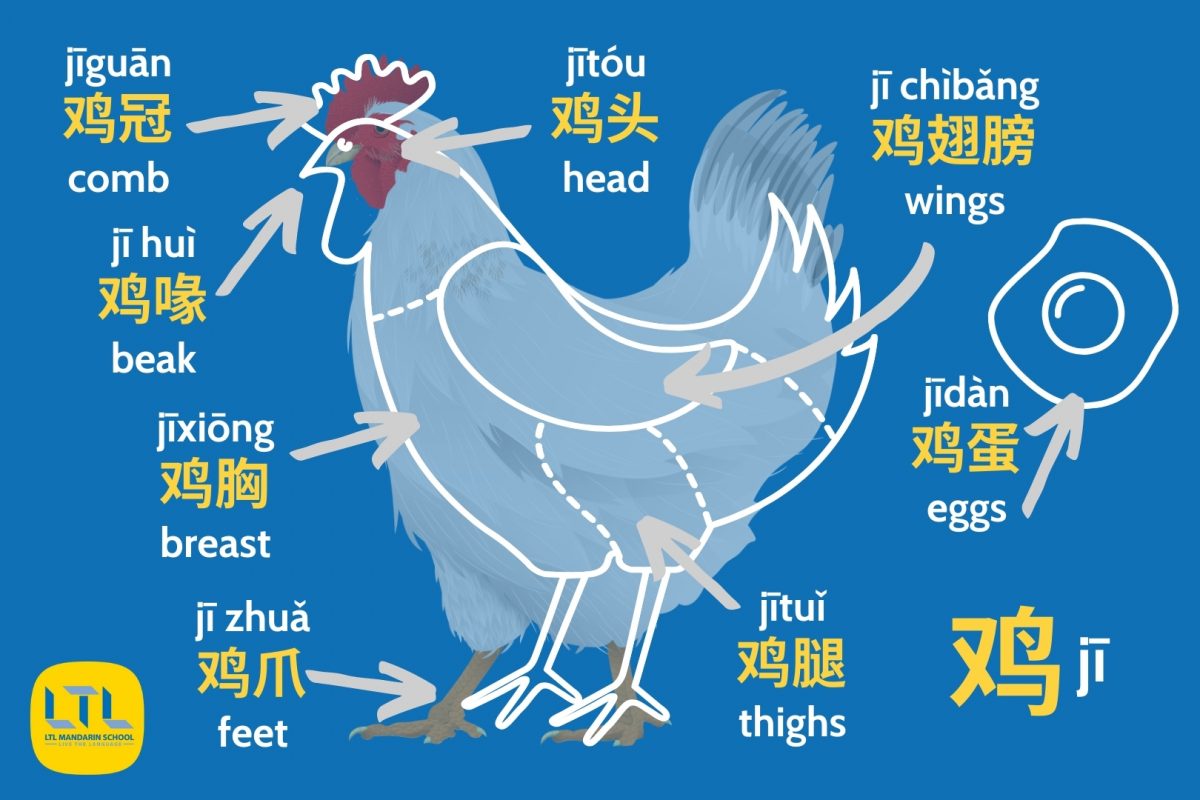
9. East vs West: Chinese Pear vs Western Pear 🍐
Our second fruit is a phenomenon you may not have heard of.
Whilst the pear is an international fruit, the ‘Chinese pear’ is a small variation often sold only in Asia.
Both are filled with nutritious benefits, but are definitely not the same.

Pears in the East
The Chinese pear, also known as the Asian pear and various other names, is grown throughout East Asia, as well as Australia, India and even some parts of the US.
Due to their high water content and tough texture, the pears are typically peeled and consumed whole, not baked or as an ingredient in dishes.
This treat, unlike the grapefruit, is extremely healthy for you and the crisp fruit delivers over one-third of your daily fibre, as well as have vitamin C, vitamin K, and potassium.
Unlike the traditional pear, these are best consumed when crunchy to optimise the health benefits.
Also unlike western pears, these snacks are not cheap at all, so consumption is typically reserved for special guests, to be given as a gift or eaten in a communal setting.
Pears in the West
Despite us calling it the western pear, the pear you see in your local supermarket was actually cultivated in China in around 5,000 BC.
Feng Li, originally a Chinese diplomat, began cultivating a whole variety of fruits for commercial sale.
The name however, comes from Latin.
A close cousin of the apple, this low calorie snack boasts high levels of vitamins A, B1, B2, B3 and C, potassium, phosphorus, calcium, magnesium, and iron. It’s probably one of the healthiest items on our Eastern diet vs Western diet list.
In The Odyssey, Homer compares pears as a “gift of the Gods”, specifically from Pomona. She was a Goddess of fruit and was a cherished member of Roman civilisation, favoured for her assistance in pear growing and grafting skills.
Today, pears are the 5th most produced fruit in the world!
They’re extremely popular and recognised for their benefits in nourishing gut bacteria, however there is still ongoing research into their extended list of benefits.
One medium sized pear is believed to hold 17g of sugar but these are natural sugars and not the type that you’ll find in a McDonalds.
What pear tickles your fancy? Tell us below!
10. East vs West: Congee vs Oatmeal 🥣
Our favourite breakfast, warm, flavour-filled grains (either oats or rice) with either water or milk and a whole lot of extra ingredients.
Perfect for winter, illness, tight budgets or filling you up for the day. But let us break down the very subtle but notable differences.

Congee in the East
粥 – zhōu, or congee, is the rice porridge you can see keeping toasty in large, metal containers on any breakfast stall in China, often next to the baozi and soy milk.
Many recipes will encourage the use of additional ingredients including meats, seafood, salted duck eggs and herbs.
Whilst the official english name is congee, you’ll find that many people refer to it as ‘rice porridge’, using a description of the dish to name it due to how uncommonly ‘congee’ is said.
This might be linked to the root of the word congee, which comes from Tamil kanji and means ‘boiling’, actually naming the dish after the water the rice was cooked in.
It was created by the Yellow Emperor more than 4,000 years ago, by first steaming and later boiling the rice.
He is credited for discovering Traditional Chinese Medicine (TCM) – so it is unsurprising that he also found congee, praised for its TCM qualities.
Many believe that eating congee after medicinal herbs reinforces the healthy qualities alongside promoting sweating in the individual, further removing any bad energies in their body.
Congee is also believed to protect the stomach lining as it helps even distribution of medicinal herbs that have been consumed and delivers them directly to the affected areas of the body.
Congee is eaten in over 15 countries as a staple and although its commonly made of rice, other legumes and grains can also be broken down to the same consistency.
Although considered a staple dish, it is forbidden to eat on the first day of the new year as originally, the dish was associated with poverty and being poor, thus consuming it on the first day of the new year could set a bad precedent for the coming year.
Oatmeal in the West
Oatmeal, or porridge, has been consumed throughout the world for thousands of years with many variations cropping up.
Although exact origins aren’t clear, many attribute the origins of the dish to Scotland for their agreeable climate for growing and producing oats which has been recorded since around 600AD.
Much like its Chinese counterpart, it has health benefits, included recorded evidence of the ability to reduce cholesterol as much as 10% in an individual and are recognised as a great source of dietary fibre.
Typically, the oats are cooked with milk or water and flavourings are added in such as honey, sugar, maple syrup or fruit and the oats can come in quick, light ‘oatmeal’ form or as overnight rolled oats that require a lot more preparation.
The famous ‘gruel’ seen in many films set in the past is an extremely thin variation of porridge rarely seen today.

Peanut Allergies in China ⚠️ 5 Danger Zones
Peanut Allergy in China ⚠️ Danger Zones You Must Be Aware Of How is it possible to live with a Peanut Allergy in China? Can it even be done? Allergies are never easy, but it is possible to live in…
11. East vs West: Jianbing vs Galette 🥞
We all love pancakes. Internationally, we’ve even dedicated an official annual holiday (pancake day) to share our love of the dish with others.
But when we say pancake, it’s worth noting just how many variations exist and which are the most popular – in this case, the difference between savoury pancakes internationally.
Plus – if you’re planning on breaking down your favourite Chinese pancake to your family, you might want to know the in’s and out’s of it first.

Jianbing in the East
The 煎饼 (jiānbǐng) is another popular street food style breakfast snack cooked on a cast iron grill in under 5 minutes.
The dish is offered from the early hours until midday, and typically folded over in two for you to carry away and eat on the go.
You can find a vendor on most street corners who will make the delightful snack fresh in front of your eyes and specific to your personal preferences.
Extra egg? No problem. No spice? You might receive a side eye from the queue behind you, but it’s doable.
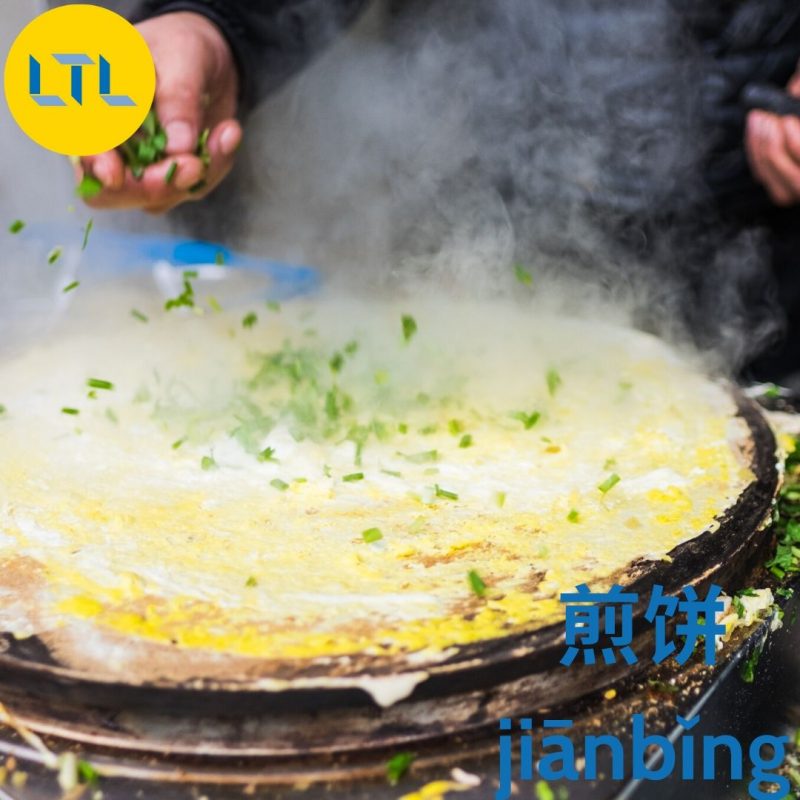
The savory crispy pancakes typically include eggs, wheat and mung bean flour, puffed fried wonton, pickles, scallion and rich sauces.
You can even ask for a 油条 to be thrown in for good measure if you think you can finish it all!
This tasty delight is believed to have originated from the Shandong province in 200AD in its rawest form – batter cooked thin over shields under the boiling sun after battle.
Many variations exist regionally and even by vendor – some may offer to throw in extra salad, spice and even bacon if you’re lucky.
Although it could be healthy in theory for the use of mungbean flour and fresh ingredients, the frying element mixed with fatty wonton or youtiao filling leaves it at the less healthy end of the scale.
The 煎饼 can be seen today internationally, as globalisation has encouraged its spread, however whether you’re in London or the USA, you’re still most locally to find an authentic version in your closest Chinatown.
Prices vary but will rarely make it to 20RMB if you’re buying locally. A bargain and an utter joy to eat!
Here’s a video of one in progress, your mouth watering yet?
Galette in the West
The ultimate stuffed savoury pancake, native to France hasn’t gained as much worldwide notoriety as its Chinese counterpart.
Its name refers to its origins as a ‘flat cake’ and although many compare it to a pizza for its many fillings and savoury taste (differentiating it from a sweet pancake), the galette is actually extremely similar to the jianbing in characteristics.
Also known as the Breton Galette, this savoury pancake originated in the north of France, in Brittany, in the 14th century.
It’s created with buckwheat flour – an ingredient praised for its ability to grow in dry and impoverished land.
The most ‘traditional’ combination is a ham and cheese combination, however ingredients often include any of the following: cheese, vegetables, meat and fish.
The most recognisable element of the galette is the fried egg visible in the opening when the folds of the pancake don’t quite meet each other.
To add to the quirky traditions of the dish, it’s typically eaten alongside a bowl of cider to refresh the palette.
The Breton galette is probably the nearest international thing to the Jianbing with crêperies (restaurants serving only galettes) in almost every big city in the world, however the specificity of the galette is that it is made with buckwheat, which is specific to the region of Brittany in France.
Both so good – but which do you prefer?
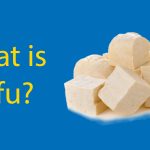
What is Tofu & How is Tofu Made? Your Questions, Answered
Tofu Dishes, How It’s Made & All The Varieties Of Tofu As one of the staples of East Asian cuisine, tofu (豆腐 dòufu) is a food you will definitely encounter on a trip to China. But what is tofu? And how…
12. East vs West: Tea Egg vs Boiled Egg 🥚
Everyone enjoys a tasty egg, but did you know that the chicken egg boiled in water is just one of many ways you can prepare it through boiling?
In China, there are many different types of egg-snacks you can find on the street (one even includes a crunchy embryo!) but here’s our break down of the tea egg.

Tea Egg in the East
The tea egg 茶葉蛋 (cháyè dàn), is a cheap tasty household snack available for around 2RMB (that is barely a few cents or pennies) from most street vendors or restaurants.
To consume the egg, it is typically purchased, peeled, and eaten with your hands.
The tea egg traditionally originates from Zhejiang in China and the method was developed as a way to preserve eggs for a longer period of time.
To make your very own version, first you must simply boil an egg in plain water.
Once hard, you crack the eggs shell slightly to allow liquid to seep into the egg and boil it for a second time in tea, allowing for flavour to soak in and a pattern – somewhat like marble – to decorate the egg.
The traditional recipe includes a mixture of soy sauce, spices, and black tea leaves. So don’t let the name confuse you – it’s so much more than just tea.
Five-spice is also used alongside the spices and sometimes Sichuan pepper. Interestingly, not every tea-egg uses tea leaves, but they are still considered tea eggs.
To make one yourself, place the the cracked eggs in your sauce base for a day – or longer if you want more flavour – and store them in the fridge during this time. Ensure that the entirety of the egg is submerged during this time.
A Chinese tea egg shouldn’t be kept for any longer than 3 or 4 days after being prepared (you can preserve it in your fridge), although they’re so tasty, we’ll be surprised if you can keep them that long!

What Are Century Eggs? Should You Try Them? Your Questions, Answered
What are Century Eggs, how are they made and what do they taste like? We tried the popular ancient Chinese snack so you don’t have to.
Boiled Egg in the West
This simple dish was first discovered in around 5000BC and became common-place in Roman society after the creation of pottery, allowing people to cook the eggs surrounded by water.
They were so popular, that the phrase ab ova ad mala was coined, meaning ‘from eggs to apples’, symbolising the beginning to the end of the meal (eggs for starters, apples for dessert).
Some religions and cultures recognise the boiled egg symbolically, seeing its roundness as representing the cycle of life through rebirth and renewal
Boiled eggs are typically immersed in water but can also be steamed.
Despite their simplicity, many recipes exist online to enable people to create them ‘just right’ – whether they’d prefer the yolk runny, gooey or solid. This time span varies from 8 – 12 minutes.
Some recipes may encourage cooking the egg in water filled with salt or vinegar to prevent cracks or help any cracks quickly solidify and avoid ruining the entire egg.
Egg timers were actually named as a direct result of egg boiling, as they were so commonly needed to ensure the perfect egg.
Who would have thought the simple boiled egg could have so much history and influence!
Eggs in the east and eggs in the west clearly differ quite sharply in not just flavour but also colour. But which one takes the trophy? Tell us below!
13. East vs West: Xianbing vs Quesadilla 🥙
Still with us? If so, we salute you, one more to go and it’s a good one!
Our final East vs West cuisine comparison to consider, is the Chinese meat pie vs the quesadilla.

Xianbing in the East
This Chinese meat pie 馅饼 (xiàn bǐng) is a traditional street food originating from Beijing, the name literally meaning ‘filled pastry’.
Many people have compared it to an oversized, fried dumpling or even ‘hockey pucks’.
The 馅饼 is an extremely popular dish in the north and is typically halal, produced by the Islamic population but distributed amongst and consumed by the entire population.
If eaten inside a restaurant, it’s often served alongside a light, sour soup to complement the stodgy filling dish.
However on the streets, it is served with a dipping sauce that is made up from garlic, soy sauce, sesame oil, and rice vinegar.
The dough uses more water than usual, no leavening agents and requires little kneading to shape it so is extremely low effort to produce.
The fillings usually follow the blueprint of:

- Beef
- Scallions
- Salt
- Green onions
- Ginger
- Soy sauce
- Pepper
- Egg
- Oyster sauce
- Sesame oil
- Sugar
- Cooking wine
- White onion
Once the ingredients are encased in the dough and shaped, the pies are lightly fried, preserving the juices and flavours inside the deep fried little snacks.
They don’t take long to finish either – less than 10 minutes!
It’s probably clear from the cripsy, ‘fried’ crust description, but these pies definitely fall low on the healthy scale, a single one making 15% of your daily allowed fat intake.
But hey, it’s super tasty and worth it occasionally.
Quesadilla in the West
We could have compared the meat pie to the Cornish pasty but felt that the quesadilla was more fitting because of the shared method of light frying and crispy end product – compared to the baked pasty.
The quesadilla – literally translated as ‘little cheesy thing’, was first created in the 16th century.
The original dish was filled with pumpkins and squash, then baked, but the recipe has been adapted significantly since its humble beginnings.
The quesadilla originates from Mexico, and is produced by filled a tortilla with cheese, meats and various vegetables.
After prep, the snack is fried on a griddle on both sides, preserving the flavour inside the snack surrounded by its flaky, crispy tortilla blanket.
- An important side note: quesadillas do not always come with cheese, despite their name. If you’re particularly wanting cheese, make sure to specify. 🧀
Much like the meat pie, the ingredients are safely tucked away inside the flour or wheat wrap and fried in place.
So Who Wins?
HOW CAN WE DECIDE?!
The great thing about food is that we all think differently. Whereas I love one thing, you may love another. That’s why we stopped short of rating these dishes and instead asked for YOUR comments! That we can truly define what are the people’s favourites!
Each dish listed has its pro’s, cons and fun, quirky legends behind them.
DID WE MISS ANY? Drop us a comment and we’ll gladly add more comparisons!
If this was all a little overwhelming though, why not start with our video about the basics of Chinese food instead?
Here’s a quick-fire online class that was run by Teacher Ray at our Shanghai school.
East Cuisine vs West Cuisine – FAQ’s
Are there Chinese equivalents to Western dishes?
Yes! Typically most dishes have an equivalent, we’ve touched on a number of them in this article.
What is the Chinese name for Dumplings?
The most common would be called 饺子(jiǎozi) or 水饺 (shuǐjiǎo).
There are a huge number of varieties of dumplings though and each go by their own name!
Is there really a Chinese dish that sounds like the American actor Roger Moore?
You must be referring to the 肉夹馍 (ròujiāmó)!
It’s a tasty variation of a hamburger. In fact it’s often referred to as the Chinese Hamburger although these are in fact quite different!
What are dumplings typically filled with in China?
Absolutely everything! Here are some of the most common (plus a random bonus one)!
🐂 Beef = financial success
🐟 Fish = incoming wealth
🥬 Cabbage = good luck and wealth
🌿 Celery = potential for money
🍄 Mushroom = fortune and wealth
💰 A coin = prosperity (this is very uncommon today)
What is a Youtiao 油条? Is it like a doughnut?
In the most simple description, Youtiao is a fried stick of dough.
It’s light, fluffy and a little bit crunchy. On the occasion, it even flakes.
The stick itself doesn’t have much taste but it adds a new texture to other dishes and makes sure you don’t go hungry.
Is it true in China you have to cook Hotpot meat yourself?
Yes hotpot is quite different to the western versions.
Often a large pot filled is placed in the middle of a table and can feature multiple partitions, allowing it to be filled with multiple different flavoured broths at the same time.
A popular style is one half spicy, one half vegetable, however some restaurants will allow multiple different broths to brew at the same time.
Some times the pot is even split into four!
Food is delivered to the table, raw, and you all throw ingredients into the pot and cook it whilst chatting and drinking.
It’s superb fun!
What are common ingredients in Malatang 麻辣烫?
What are common ingredients in a Xianbing 馅饼?
Ingredients include:
Beef
Scallions
Salt
Green onions
Ginger
Soy sauce
Pepper
Egg
Oyster sauce
Sesame oil
Sugar
Cooking wine
White onion
Which is better, western or eastern cuisine?
That’s down to you!
The great thing about food is that we all think differently. Whereas I love one thing, you may love another.
How can we rate the dishes when everyone has their own opinion!
Want more from LTL?
If you wish to hear more from LTL Mandarin School why not join our mailing list.
We give plenty of handy information on learning Chinese, useful apps to learn the language and everything going on at our LTL schools!
FANCY LEARNING MANDARIN ONLINE? Check out our amazing Chinese classes, for free!
Sign up below and become part of our ever growing community!

















 Hi, my name is Manuel! I am from Spain and I am a Student Advisor at LTL and I’m based at our Taipei school.
Hi, my name is Manuel! I am from Spain and I am a Student Advisor at LTL and I’m based at our Taipei school. Hi, my name is Mojca! I am from Slovenia in Europe and I work as a student advisor at our Shanghai school.
Hi, my name is Mojca! I am from Slovenia in Europe and I work as a student advisor at our Shanghai school.

